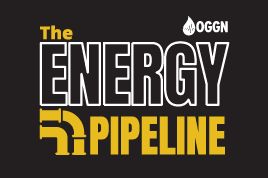If you already have an existing account with another Cat App, you can use the same account to sign in here
One Account. All of Cat.
Your Caterpillar account is the single account you use to log in to select services and applications we offer. Shop for parts and machines online, manage your fleet, go mobile, and more.
Account Information
Site Settings
Security
Parts & Services
Sustainability
About
The Inflation Reduction Act (IRA) makes the single largest investment in climate and energy in American history, putting the U.S. on a pathway to a net-zero economy by 2050.
Signed into law in 2022, the Inflation Reduction Act carries potential benefits for diverse sectors, including the U.S. oil and gas industry. While the legislation is designed to address economic challenges, it may present opportunities that could positively impact energy markets and companies operating within them.
At its core, the IRA is a mechanism for transitioning away from fossil fuel-based energy production; however, there are features within it that apply to traditional energy sources. For example, renewable natural gas (RNG) has received a 10-year credit. Credits for carbon sequestration at natural gas-fired facilities are covered under the IRA and nuclear energy is now entitled to a production tax credit.
Also, the legislation may ultimately result in streamlining regulatory processes, offering a more efficient framework for the oil and gas industry. The potential reduction in bureaucratic hurdles could lead to a more straightforward regulatory environment that facilitates smoother operations for energy companies.
Other key aspects of the IRA include:
Global Competitiveness
By fostering a supportive economic climate, the IRA could enhance the global competitiveness of the U.S. oil and gas industry. Natural gas has increasingly become more of a global commodity.
The expected decline in U.S. demand for fossil fuels makes oil exports more attractive for industry, according to a study by Princeton University. The study found that, because of the IRA, U.S. crude and refined product exports could increase anywhere from 18 to 62 percent by 2030.[i]
Encouraging Sustainable Practices
Economic policies aligned with the act may encourage the adoption of sustainable practices within the industry. An example is the potential for financial incentives for companies investing in “cleaner technologies” and environmental initiatives, aligning the sector with evolving global expectations.
According to the Princeton study, the IRA also provides grants, loans, and tax incentives that will drive hundreds of billions of dollars in cumulative investment in American “energy communities” between now and 2030.
The IRA provides a strong financial incentive to retool and repower existing power plant sites and reinvest in energy producing communities.
As defined in the Inflation Reduction Act, the Energy Community Tax Credit Bonus applies a bonus of up to 10 percent (for production tax credits) or 10 percentage points (for investment tax credits) for projects, facilities, and technologies located in energy communities. Bonus tax credits are available for investments in “clean” electricity generation sited in traditional energy communities across America, which are defined as areas with significant historical employment in energy resource, extraction, processing or transportation. Or, in locales where coal plants or mines have closed in recent decades.
Workforce Development
With potential growth in the industry, the IRA could drive workforce development initiatives. As they anticipate increased demand, companies investing in training programs, skills development, and job creation will contribute to a robust and skilled workforce.
Oil & Gas remains lifeblood
Sometimes lost in the drive to decarbonize and develop renewable fuels and technologies is the fact that 84% of all the energy produced in the U.S still comes from oil and natural gas, says David Holt, president of the Consumer Energy Alliance, who was a guest on The Energy Pipeline podcast, which aired August 2023.
“As we continue to grow wind and solar and renewables, oil and natural gas are still our lifeblood,” Holt said. “We had federal announcements before this summer that said as much as two-thirds of the country could be at risk for brownouts and blackouts.
“So, affordable, reliable, and environmentally responsible energy is the big third tenet of our philosophy and our approach and what our members are looking for,” Holt said. “How do we continue to push the envelope on making things better, faster, stronger, cleaner, but ensuring we have reliable and affordable energy? That's our mission.”
[i] “Preliminary Report: The Climate and Energy Impacts of the Inflation Reduction Act of 2022,” REPEAT Project, Princeton, NJ, August 2022.
Related Content
-
Decoding IRA Implications
Jordan Yates & Wayne interview David Holt, President of the Consumer Energy Alliance, to better understand how the Inflation Reduction Act affected the Energy Community.
Learn More -
The Energy Pipeline Podcast
Ready to learn about all things Oil & Gas? Listen to The Energy Pipeline Podcast, powered by Cat Oil & Gas. The Energy Pipeline is a new podcast that provides fresh insight every week on issues impacting our industry. Learn from the brilliant hosts who combined provide over 50 years of industry experience enabling you to elevate your insight into today’s most exciting topics. From hydraulic fracturing to the future of the industry through sustainable lenses, there’s so much to listen to. The Energy Pipeline is the latest of many podcasts produced by Oil and Gas Global Network™ (OGGN™), the world’s largest network of oil and gas podcasts, educating listeners on a variety of topics.
Learn More



